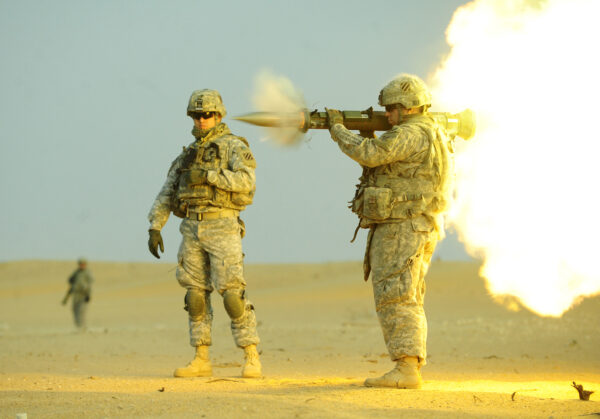
Pfc. Matthew Carpenter fires an AT-4 during training at the Udairi Range Complex near Camp Buehring, Kuwait, 2012 (Photo: Sgt Christopher Johnston)
In response to emerging research, the Department of Defense and Veterans Affairs are intensifying their focus on monitoring and mitigating traumatic brain injuries and their influence on mental health, particularly concerning low-level blasts experienced on the battlefield, through the Warfighter Brain Health Initiative.
In June 2022, the DOD launched the Warfighter Brain Health Initiative, a program designed to maximize the cognitive and physical performance of Service Members. The initiative emphasizes understanding, preventing, accurately diagnosing, and promptly treating blast overpressure and its effects. It encompasses various facets, including identifying and mitigating brain exposures, preventing and minimizing traumatic brain injury effects, and advancing warfighter brain health science.
Low-level blasts, generated from heavy weapons or explosives, are now acknowledged as potential contributors to cognitive issues, including concentration problems, slowed reaction time, memory difficulties, headaches, hearing problems, and decreased hand-eye coordination, despite not always resulting in clinically diagnosable concussions.
Military occupations and heavy weapon systems that may expose Service Members to low-level blasts include armor, artillery, gunnery, shoulder-mounted weapons, breaching charges, explosive ordnance disposal, military instructor training, .50 caliber weapons, and indirect-fire weapons.
Additionally, the initiative places a specific emphasis on blast overpressure, a sudden pressure wave resulting from explosions, occurring both in combat and training scenarios. The DOD initiated 26 health and performance studies, known as Blast Overpressure Studies, to identify, monitor, and document blast overpressure events, providing safety measures and mitigation actions. The study evaluated the impact of 15 tier-one weapons on brain health and cognitive function.
Kathy Lee, Director of Warfighter Brain Health Policy, highlights the ongoing importance of raising awareness about blast overpressure symptoms, education, and treatment options. The DOD is on track to submit a report to Congress based on the findings of the Blast Overpressure Studies, with plans for a case analysis in 2024 to evaluate a standardized program for monitoring blast overpressure.
The DOD is committed to a thorough approach to warfighter brain health including monitoring, injury prevention measures, and innovative treatments. Dr. Lester Martinez-Lopez, Assistant Secretary of Defense for Health Affairs, says promoting brain health and countering traumatic brain injuries is the Department’s priority.
The Warfighter Brain Health Initiative is a collaborative effort between operational and medical communities, addressing brain health threats beyond conventional focus areas like blast overpressure. Dr. Christopher Romig, associated with the Stella Center, emphasizes the link between low-level blast exposure and mental health issues in Veterans, particularly among Special Operators like Navy SEALs and Green Berets.
The Defense Health Agency’s Traumatic Brain Injury Center of Excellence offers resources for both providers and patients, including fact sheets on low-level blast exposure, as well as information on TBI prevention, diagnosis, and treatment. The DOD and Veterans Affairs are committed to understanding the long-term and late effects of low-level blast exposure on the brain, with a focus on the well-being of Service Members and Veterans through ongoing research and strategies.

Author: Rikki Almanza
Rikki is a Web Content Coordinator for the American Legion, Department of California. With a deep-rooted connection to the military, a spouse who is a Navy veteran, a father who served in the Air Force for 25 years, and a grandfather who proudly served, Rikki is committed to using her skills and knowledge to provide valuable assistance and resources to servicemembers and veterans.












